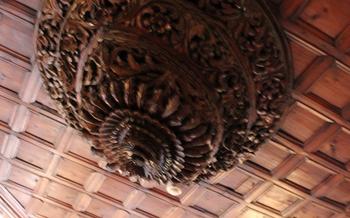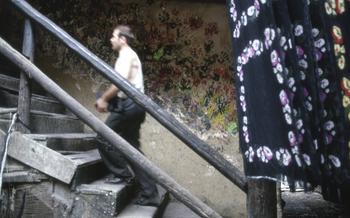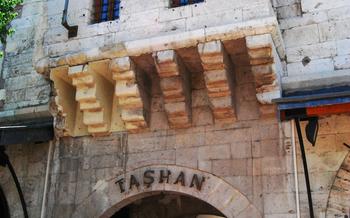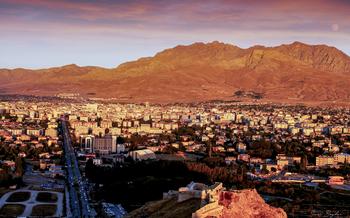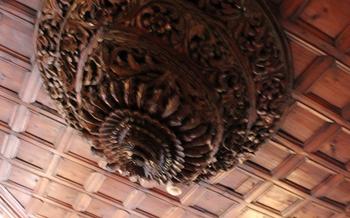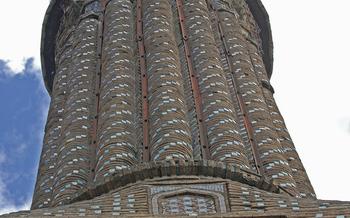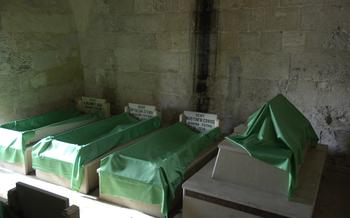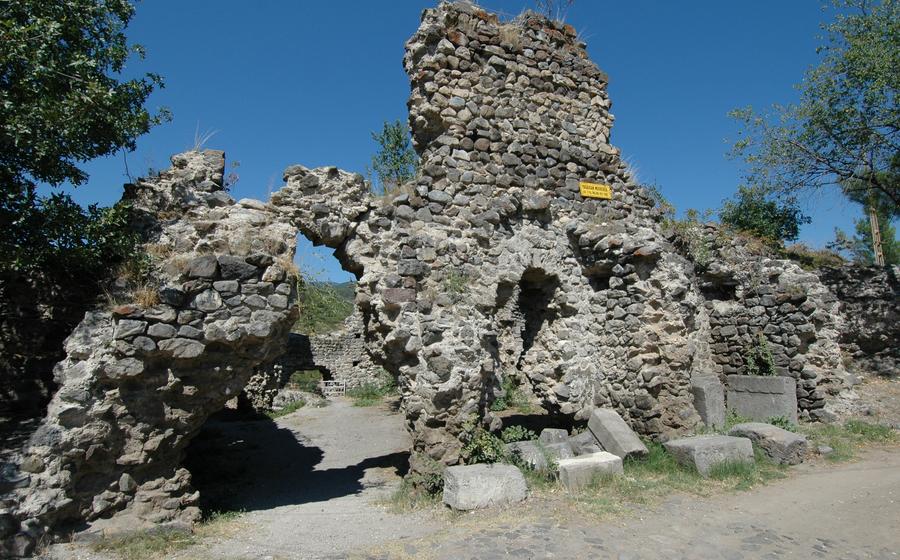
Niksar Yağıbasan Medrese
- History of the Niksar Yağıbasan Medrese
- Location and Accessibility:
- Architectural Highlights
- Educational Significance
- Cultural Importance
- Visiting the Niksar Yağıbasan Medrese
- Explore the Interior
- Stroll Through the Courtyard
- Discover Hidden Corners
- Attend a Workshop or Class
- Shop for Handicrafts
- Combine with Other Tokat Attractions
History of the Niksar Yağıbasan Medrese
The Niksar Yağıbasan Medrese is a historical building located in the city of Tokat, Turkey. It was built in the 13th century by the Seljuk Sultan Alaeddin Keykubad I, as part of a complex that also included a mosque, a hospital, and a caravanserai. The medrese was intended to be a center of Islamic learning and scholarship, and it quickly became one of the most important educational institutions in the region.
The architectural style of the medrese is typical of Seljuk architecture, with its pointed arches, domes, and minarets. The building is constructed of stone and brick, and it is decorated with intricate carvings and tilework. The medrese has been restored several times over the centuries, most recently in the 19th century when it was converted into a museum.
The Niksar Yağıbasan Medrese is a significant landmark in Tokat, and it is a popular tourist destination. It is a reminder of the city's rich history and culture, and it is a testament to the architectural achievements of the Seljuk dynasty.
Location and Accessibility:
The Niksar Yağıbasan Medrese is situated in the heart of Niksar, a charming town in the Tokat province of Turkey. It is conveniently positioned within the historic city center, making it easily accessible for visitors. To reach the medrese, tourists can take advantage of the well-connected transportation network. Regular bus services operate from Tokat city center, providing a comfortable and affordable mode of transportation. Alternatively, travelers can opt for the scenic route by hiring a car and embarking on a leisurely drive through the picturesque countryside. Ample parking facilities are available near the medrese, ensuring a hassle-free visit for those arriving by private vehicle. For tourists with disabilities, the medrese is wheelchair-accessible, allowing them to explore its architectural wonders without any hindrances.
Architectural Highlights
The Niksar Yağıbasan Medrese stands out for its unique architectural features, reflecting the finest craftsmanship and symbolism of the Seljuk era. The medrese's facade is adorned with intricate carvings and calligraphy, showcasing verses from the Quran and intricate geometric patterns. Its central dome, supported by four massive pillars, dominates the skyline, symbolizing the pursuit of knowledge and spiritual enlightenment. The minarets, with their slender silhouettes, provide a striking contrast to the domed roof, adding an element of grace and symmetry to the structure.
Inside the medrese, the courtyard is surrounded by a series of iwans, or vaulted chambers, which served as classrooms and study areas for students. Each iwan is meticulously decorated with colorful tiles, intricate stucco work, and carved wooden panels, creating a visually stunning and inspiring environment for learning. The prayer hall, located in the qibla wall, features a mihrab, or prayer niche, which is intricately carved with verses from the Quran and adorned with colorful tiles, highlighting the importance of religious devotion in the life of a student.
Compared to other similar structures in Turkey, the Niksar Yağıbasan Medrese exhibits a harmonious blend of Seljuk and Ottoman architectural influences. Its central dome, iwans, and minarets are reminiscent of the Great Mosque of Divriği, while the intricate carvings and tilework showcase the artistic refinement of the Ottoman period. The medrese's unique architectural style, combining elements from different eras, makes it a valuable and distinctive landmark in the region.
Educational Significance
The Niksar Yağıbasan Medrese held immense educational significance, serving as a renowned center for Islamic learning and scholarship. It offered a comprehensive curriculum encompassing various disciplines, including Islamic law, theology, philosophy, and science. The medrese attracted brilliant scholars and students from across the region, fostering an environment of intellectual discourse and exchange. Notable scholars such as Kadızade Mehmed Efendi, a renowned Islamic jurist, and Ali Kuşçu, a prominent astronomer and mathematician, were associated with the medrese. Their contributions to various fields of knowledge enriched the intellectual landscape of the region, making the Niksar Yağıbasan Medrese a hub of Islamic scholarship and erudition.
Cultural Importance
The Niksar Yağıbasan Medrese holds immense cultural significance within the local community, serving as a symbol of religious and cultural identity. It has been a focal point for religious practices, education, and community gatherings for centuries, fostering a sense of unity and belonging among the people of Tokat. The medrese's architecture, with its intricate designs and craftsmanship, reflects the region's rich cultural heritage and artistic traditions.
Throughout the year, the medrese plays host to various traditional events and festivals that celebrate the region's culture and history. These events showcase traditional music, dance, and art performances, drawing visitors from near and far. The annual Niksar Yağıbasan Medrese Festival is a particularly popular event that attracts thousands of people to the city. During the festival, the medrese's courtyard transforms into a vibrant marketplace where local artisans display and sell their handmade crafts, including carpets, pottery, jewelry, and other unique items.
The Niksar Yağıbasan Medrese stands as a testament to the enduring legacy of Islamic architecture and education in Turkey. Its cultural significance extends beyond its religious and educational functions, as it has become an integral part of the fabric of Tokat's cultural identity.
Visiting the Niksar Yağıbasan Medrese
Visiting the Niksar Yağıbasan Medrese is a rewarding experience that offers a glimpse into the architectural, historical, and cultural significance of this Islamic learning center. It is open to the public, and visitors are welcome to explore its premises during specific hours. Admission fees are typically minimal, and guided tours are available in various languages, providing insightful commentary on the medrese's history and features.
When visiting the medrese, it is essential to observe the local customs and dress code. Modest attire is recommended, and visitors should refrain from wearing revealing or inappropriate clothing. Respectful behavior is expected within the medrese's sacred spaces, and visitors should avoid loud noises or disruptive activities.
To capture the best photographs of the Niksar Yağıbasan Medrese, consider visiting during the golden hours of sunrise or sunset when the warm light enhances the architectural details and creates a picturesque ambiance. Utilize a wide-angle lens to capture the grandeur of the structure and experiment with different angles to showcase its unique features.
Explore the Interior
Venturing into the Niksar Yağıbasan Medrese, you'll discover a treasure trove of architectural wonders and historical artifacts. Explore the spacious classrooms, where students once eagerly absorbed knowledge, and admire the intricate calligraphy adorning the walls. Step into the tranquil library, lined with shelves that once held precious manuscripts and books, and imagine the scholars who spent countless hours here, seeking enlightenment.
Marvel at the exquisite tilework and carvings that embellish every corner of the medrese. Each tile, each intricate pattern, tells a story, reflecting the artistic prowess of its creators. Gaze upon historical artifacts and manuscripts that have been carefully preserved, offering a glimpse into the intellectual and cultural heritage of this venerable institution.
Interactive exhibits and audio-visual presentations bring the history of the medrese to life, allowing visitors to engage with the past in a captivating and immersive way. Learn about the renowned scholars who taught and studied here, and the significant contributions they made to various fields of knowledge.
Stroll Through the Courtyard
As you enter the courtyard of the Niksar Yağıbasan Medrese, a sense of serenity envelops you, transporting you back in time. The central fountain or water feature, surrounded by intricate tilework and delicate carvings, creates a soothing ambiance. Take a moment to appreciate the architectural details that adorn the surrounding walls, each arch and column telling a story of the medrese's rich history. Find a quiet corner to sit and contemplate, or simply soak in the peaceful atmosphere, letting the worries of the world melt away.
Discover Hidden Corners
Beyond the main courtyard and prominent halls, the Niksar Yağıbasan Medrese conceals hidden gems waiting to be discovered. Explore lesser-known areas within the complex, where tranquil gardens or courtyards lie tucked away from the main paths. These secluded spots offer a serene ambiance, inviting you to pause and appreciate the intricate details of the architecture. Discover hidden chambers or rooms with unique features, each telling a story of the medrese's rich history. Embark on a journey of exploration and uncover the secrets of this architectural masterpiece, leaving you with a sense of wonder and a deeper appreciation for its hidden treasures.
Attend a Workshop or Class
The Niksar Yağıbasan Medrese offers a unique opportunity for visitors to engage in hands-on learning experiences through workshops and classes. These immersive sessions provide an insider's perspective into traditional Turkish arts and crafts, allowing travelers to connect with the region's rich cultural heritage.
Calligraphy workshops introduce the art of beautiful handwriting, using traditional tools and techniques. Participants can learn the basics of Arabic script, creating their own personalized artwork or meaningful phrases. Tile-making classes delve into the intricate world of ceramic art, where students create decorative tiles using colorful glazes and unique patterns.
For those interested in exploring other traditional crafts, workshops may be available in carpet weaving, pottery, or jewelry making. These classes offer a chance to learn from skilled artisans, preserving and promoting local cultural practices. Participants can take home their creations as unique souvenirs, cherishing the memories of their time at the Niksar Yağıbasan Medrese.
Shop for Handicrafts
The Niksar Yağıbasan Medrese complex is not just a historical and cultural landmark; it's also a vibrant hub for local crafts and artisans. As you stroll through the grounds, you'll find stalls and shops selling a variety of handmade souvenirs and traditional Turkish handicrafts. These talented artisans showcase their skills, creating beautiful carpets, intricate pottery, delicate jewelry, and other unique items that capture the essence of Turkish culture.
Shopping at the medrese is a wonderful way to support the local economy and take home a piece of Turkey to cherish. The artisans are passionate about their craft, and each item is made with love and attention to detail. Whether you're looking for a unique gift for a loved one or a special memento of your travels, you're sure to find something special here.
Don't be afraid to haggle and bargain with the artisans. It's part of the Turkish shopping experience, and you can often get a good deal if you're willing to negotiate. Just remember to be respectful and friendly, and enjoy the interaction with the locals.
Combine with Other Tokat Attractions
To fully appreciate the historical and cultural richness of Tokat, consider exploring other notable attractions in the region. The Tokat Castle, a formidable fortress perched atop a hill, offers panoramic views of the city and surrounding landscapes. For a refreshing respite, visit the Sulusok Waterfall, where cascading waters create a mesmerizing spectacle. Learn about the region's rich past at the Tokat Museum, which houses a collection of artifacts and exhibits showcasing Tokat's history and heritage. Plan an itinerary that allows you to seamlessly transition between these attractions, optimizing your time and transportation. With its diverse offerings, Tokat promises an immersive and rewarding travel experience.
